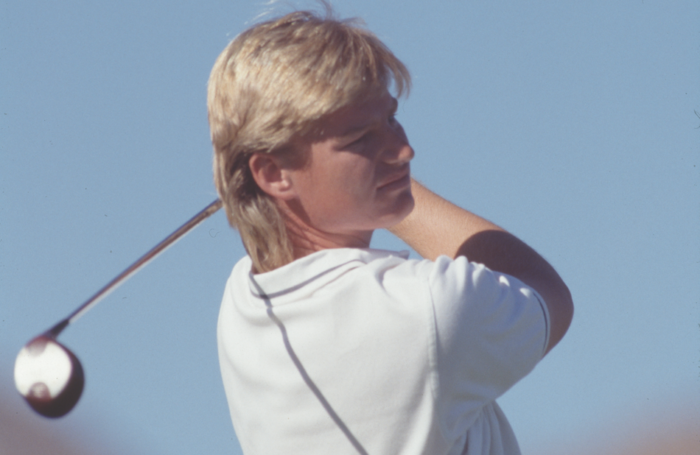Even if he were a postman Nigel Graves is unlikely to ring any bells, but 31 years ago he was the man who stopped Ernie Els in his tracks.
It was the 1988 British Amateur Championship, played from 30 May to 4 June on the magnificent Royal Porthcawl links course in south Wales. South Africa had sent a team of five golfers to the event – Els, Ben Fouchee, Neville Clarke, Ian Hutchings and Chris Davison.
Els shot rounds of 75 and 72 in the 36-hole strokeplay to qualify tie-fourth for the matchplay two shots behind the leaders, while Fouchee qualified with rounds of 74 and 79 (the cut was 155). Hutchings, Clarke and Davison all missed out, but Graves finished on the cut with 74 and 81.
In the matchplay stage comprising the 64 lowest scores and ties, Els, an 18-year-old beanpole who was based at the Air Force at Swartkop, Pretoria, saw off Mark Palmer 4 & 2, while Fouchee won his match 3 & 2. Next day, the round of 32, Els cruised past Felix Laynez 4 & 2, while Fouchee surged to an 8 & 7 win over Mark Wiggett.
Now for the last 16 and Ernie arrived at the course looking for the club caddie who had been with him the past few days. The man had gone awol but help was close at hand: me. I was based in London for the summer of ’88 and covering the event for the Argus group of newspapers. I volunteered to caddie for Ernie and I came for free, without the £5 fee (exchange rate R4.11 to the pound). Against his latest opponent, unheralded English amateur Nigel Graves, this was surely going to be a pleasant stroll alongside the ocean. It was anything but.
Graves played solidly, if unspectacularly and by the turn Els was up against it, three down and in need of an immediate turnaround. At the 10th, a 340-yard par four, his approach came up short and his chip ran through the green. Graves was on in two and soon the hole was conceded. Four down with eight to play. ‘C’mon Ernie!’
In fairness, I was of no help to the teenager and the word ‘caddie’ is an economical way of saying ‘carried his bag’. The 184-yard par-three 11th was bogeyed and now five down with seven holes to play. Was it too soon to panic? ‘Not yet,’ reckoned Ernie. The next, the 575-yard par-five 12th, was squared in pars. Five down with six to go. Too soon to panic? ‘Not yet,’ came the reply.
At the 475-yard par-four 13th, a dogleg left, Ernie missed the fairway right and we went off in search of the ball. His opponent found the fairway. Ernie’s ball flew out the grass and found a greenside bunker, while Graves’ approach found the heart of the green. ‘Now we can start panicking,’ Ernie said.
Handshakes came a few minutes later, Graves a 6 & 5 winner, one of the biggest defeats recorded against a man who would go on to win the World Match Play Championship seven times. Meanwhile, Fouchee won his last-16 encounter by one hole and then beat Ralph Howe 3 & 2 in the quarter-finals, which is when Ernie became caddie for his countryman.
The semi-finals pitted Fouchee against Graves, with Ernie as caddie. Fouchee, then still 20, saw off Graves on the 21st, much to Ernie’s obvious delight, and reached the final where he came up against Christian Hardin. A titanic struggle ensued before the Swede won at the 36th hole. Given the prestige of the British Amateur Championship, managers with cheque books had been at Royal Porthcawl all week.
Hardin, Fouchee and Graves all turned pro soon after the ’88 Amateur Championship. Fouchee won three times as a pro and had a third place at the 1993 SA Open, but his finest moment came when he hit a hole-in-one at the 1991 Bell’s Cup at Mowbray and he won 1 000 cases of the sponsor’s whisky. We tried to drink our way through a few bottles but he sold the rest at a tidy profit.
Hardin? Hardly heard from him again. Graves? Played five times on the European Tour and faded into oblivion.
And Ernie Els? Became a golfing legend and South Africa’s favourite sporting son.
– Lemke writes a monthly column for Compleat Golfer; this first appeared in the October issue








